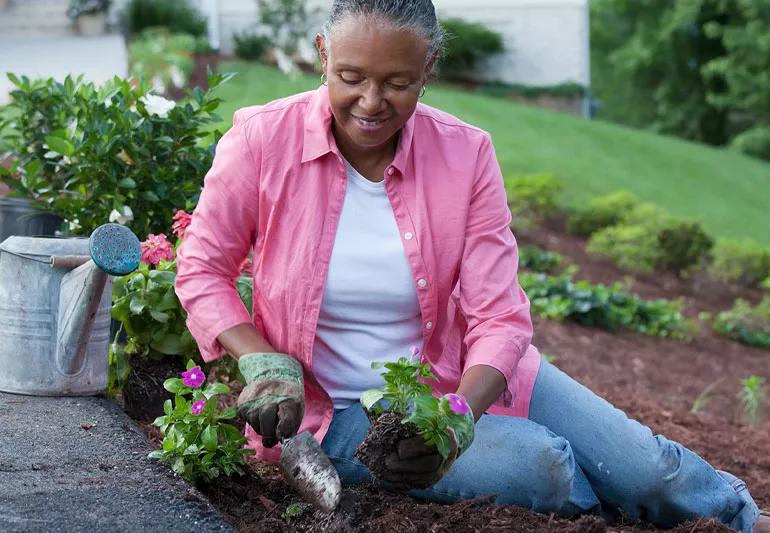Expert Gardening Tips for Developing a Sustainable and Eco-Friendly Yard
Embarking on the journey to develop a environmentally friendly and sustainable yard includes a collection of deliberate choices and methods that not just enhance the beauty of your area however also contribute positively to the environment. By picking native plants that are appropriate to your region, you can minimize reliance on chemical plant foods and chemicals while offering vital support to local wildlife. Furthermore, incorporating water conservation methods and natural horticulture methods plays a vital role in keeping a healthy community. To uncover more expert insights and useful strategies, allow us check out the crucial elements that specify an environmentally aware yard.
Select Native Plants
Choosing indigenous plants for your yard is an essential step toward attaining sustainability. Indigenous plants are naturally adjusted to the regional climate and soil problems, making them a lot more durable to local parasites and conditions. This decreases the requirement for chemical pesticides and fertilizers, thus lessening environmental effect. Furthermore, indigenous plants normally need much less water once developed, adding to a lot more reliable water usage.
Past their functional benefits, indigenous plants play an important role in supporting neighborhood biodiversity. They give necessary environment and food resources for native wild animals, consisting of pollinators such as butterflies, birds, and . This fosters a balanced ecological community, which is important for the health of your yard and the surrounding environment.

Implement Water Preservation
Implementing water conservation methods is crucial for preserving a lasting yard. Reliable water use not only lowers the environmental impact yet additionally makes certain that plants obtain appropriate hydration without waste.
Additionally, mulching is an important practice for conserving water. By applying a layer of natural compost, such as wood chips or straw, around the base of plants, gardeners can decrease dirt dissipation and preserve constant moisture degrees. Compost additionally assists control soil temperature and suppresses weed development, more adding to plant health and wellness.
Rainwater harvesting is another lasting approach. Installing rain barrels or other collection systems permits garden enthusiasts to record and save rainwater, which can later on be utilized during completely dry durations. This not just saves local water however also provides an all-natural, chemical-free resource for watering.
Lastly, selecting drought-tolerant plant varieties can dramatically lower water requirements. These plants are adjusted to prosper in low-water conditions, making them optimal for eco-friendly yards. gardening tips. Carrying out these water conservation approaches will certainly promote a resilient, sustainable yard
Usage Organic Gardening Approaches

Pest monitoring in a natural garden depends on incorporated pest management (IPM) techniques. These include encouraging useful bugs, utilizing natural predators like lacewings and ladybugs, and applying plant turning to interfere with pest life process. Friend growing, where certain plants are expanded together to drive away bugs or attract advantageous bugs, is an additional efficient strategy.
Weed control is handled through mulching and manual removal, as opposed to counting on herbicides. Mulch not only subdues weeds however likewise conserves dampness and enhances dirt health as it damages down. Organic composts, such as straw, wood chips, and leaves, are particularly valuable.
Develop Wildlife Environments
Creating wildlife environments within your garden not only boosts biodiversity but additionally supports the environment's balance. Begin by including native plants, as these are appropriate to your local environment and give vital food and sanctuary for wildlife.
Think about including a water function, such as a fish pond or birdbath, to provide a constant water resource. Water elements draw in a variety of types, from amphibians to pollinators, boosting the garden's vitality. In addition, installing birdhouses, bat boxes, and insect resorts provides secure nesting sites and encourages biodiversity.
Leave some locations of your garden uninterrupted, allowing fallen leave litter and dropped branches to build up. These natural debris heaps produce environments for pests and small animals, cultivating a balanced ecological community. Prevent making use of chemical pesticides and herbicides, as they can damage advantageous wild animals and interrupt food chains. By prioritizing these sustainable techniques, your garden can end up being a refuge for local wildlife, advertising environmental health and sustainability.
Method Composting and Mulching
An essential element of lasting Homepage gardening, composting and mulching, dramatically boosts dirt health and reduces waste. Composting involves recycling organic next page materials such as kitchen scraps, yard trimmings, and leaves. These products disintegrate to develop nutrient-rich garden compost, which acts as an all-natural plant food. Unlike artificial plant foods, compost enriches the dirt with helpful bacteria and important nutrients, promoting a much healthier yard community.
Mulching, on the other hand, includes covering the dirt surface with natural or inorganic materials, such as straw, timber chips, or shredded fallen leaves. This technique uses several benefits: it conserves dirt dampness, suppresses weed growth, and moderates dirt temperature. Mulch additionally gradually breaks down, adding natural matter to the soil and more enhancing its fertility.
To practice reliable composting, guarantee your garden compost pile has a balance of eco-friendly products (abundant in nitrogen) and brownish materials (rich in carbon), maintaining sufficient oygenation and dampness. gardening tips. Routinely turning the stack speeds up disintegration. For mulching, use a 2-3 inch layer around plants, ensuring it does not straight contact stems or trunks to avoid rot
Final Thought

Selecting indigenous plants for your garden is a basic step towards accomplishing sustainability.Additionally, including native plants can improve the aesthetic allure of your garden. These plants are adjusted to thrive in low-water problems, making them ideal for eco-friendly gardens. Applying these water conservation approaches will cultivate a durable, sustainable garden.
In final thought, establishing a sustainable and eco-friendly garden entails the strategic choice of native plants, the fostering of water conservation strategies, and the execution of organic gardening methods.
Comments on “Discover the Top Gardening Tips for Prospering Indoor Plants”